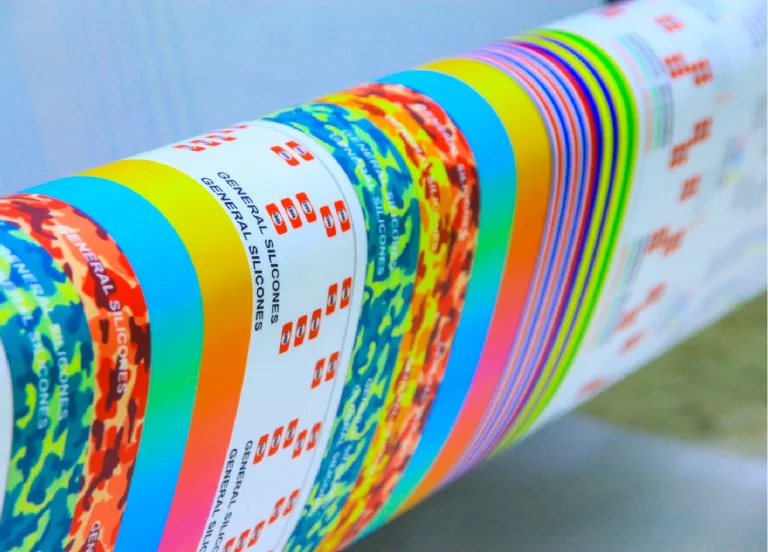Silicone Printing with various inks
Printing on silicone becomes way easier!
Silicone is a unique substrate for various applications. It is a sustainable polymeric substrate that shows resistant to many environmental factors such as heat, temperature, electric, chemicals, UV/Ozone radiation and x-rays. Silicone ink for printing has been used in various areas where a silicone surface requires patterns or printing. This is due to the chemistry of the silicone polymer that makes its surface inert to other solvent based, PU based inks. Silicone ink is the only possible ink that can adhere to silicone surfaces. The performance of these silicone-based inks on silicone surfaces is undoubtedly very good but it restricts the design freedom. Silicone based inks come in single color and cannot create a gradient effect. Also, these cannot be printed digitally. Also, there are various issues when printing silicone surfaces. Silicone is a desirable substrate due to its astonishing properties, thus there is a need to have a printable silicone surface not limited by silicone inks.
Limitations of Silicone Printing
The use of silicone-based inks by pad printing or screen printing comes at a great cost. Silicone ink tends to stick to the printing pad, making the printing labor-intensive, as regular cleaning is needed to keep printing quality. As silicone ink does not dry out like solvent-based ink, it needs baking in an oven to cure. Multicolor printing needs separate time and labor-intensive runs for each color, making production time consuming. Using screen printing techniques with silicone ink makes achieving efficient mass production even harder.
Traditional solvent based or PU based inks are not reliable for printing on the silicone surface. The surface energy of silicone is very low which the reason why the inks can not adhere to the silicone surface which makes the intermolecular forces very low. The intermolecular forces that contract the surface are termed surface tension. Surface tension, a measurement of surface energy, is expressed in dynes/cm. The higher the surface energy of the solid substrate relative to the surface tension of a liquid (water, printing inks, adhesives/encapsulation, coatings, etc.), the better will be its “wettability” and the smaller will be the contact angle. These types of chemically inert materials like silicone are hydrophobic and not naturally wettable. Compatibility between ink and polymeric substrate are the application challenges to achieve.
Pretreatment methods for Silicone Printing
Some manufacturers chose using electrical corona discharge, flame treatment, cold gas plasma, and ultraviolet irradiation as pre-treatment methods to achieve bonding with a wider range of adhesives. Each of these methods are application-specific and possesses unique advantages and potential limitations. The basic mechanism that happens in this process is a combination of both chemical and physical reaction. Due to the breaking of surface bonds of polymeric substrate during plasma or other pre-treatment methods, free electrons, ions, metastable, radicals are generated that makes the surface hydrophilic for a short time, thus makes the inks compatible to be printed. This creates very reactive free radicals on the polymer surface, which in turn can form, crosslink to the bonds of the ink formulation. In short, the wettability of the substate gets increased for a short time.
Limitations of Pretreatment methods for Silicone Printing
These pre-treatment methods for silicone printing have adverse effects also. Classical electrical corona discharge produces Ozone. Corona discharge has virtually no cleaning capabilities. For the other kinds like atmospheric plasma or electrical plasma, there are performance differences between the manufactures and ozone is produced which is hard to clean. Excessive plasma-oxidized surfaces may deleteriously affect downstream assembly processes. Also, plasma-treated surfaces age at different rates and to varying extents relative to factors with the surrounding environment. Variation in temperature and humidity can affect the quality and uniformity of treatment.
Compo-SiL® Silicone Rubber allows Digital Printing and Mass Production (No Pre-treatment needed)
With Compo-SiL® Silicone Rubber’s introduction, General Silicones offers brands and manufacturers a new, mass production friendly solution. Compo-SiL® ships as rolls of transparent printable silicone rubber sheets with a unique modified layer on the silicone. Internal test by GS demonstrated that the bonds created between silicone, modified layer, and base material are so strong that they go beyond the silicone rubber’s point of failure.

The modified layer of Compo-SiL® provides the surface for digital printing using standard compatible inks. Using existing equipment, manufacturers can digitally print on the layer without the need for modification of their production processes. If appropriate, the printed side of the Compo-SiL® silicone rubber is used in roll-to-roll production to achieve textile binding and lamination using HMA adhesives. As the silicone top layer acts as a shield, the print will take advantage of silicone’s various properties. The silicone layer protects the ink from degradation through UV radiation, water, external chemicals, and mechanical exposure.

